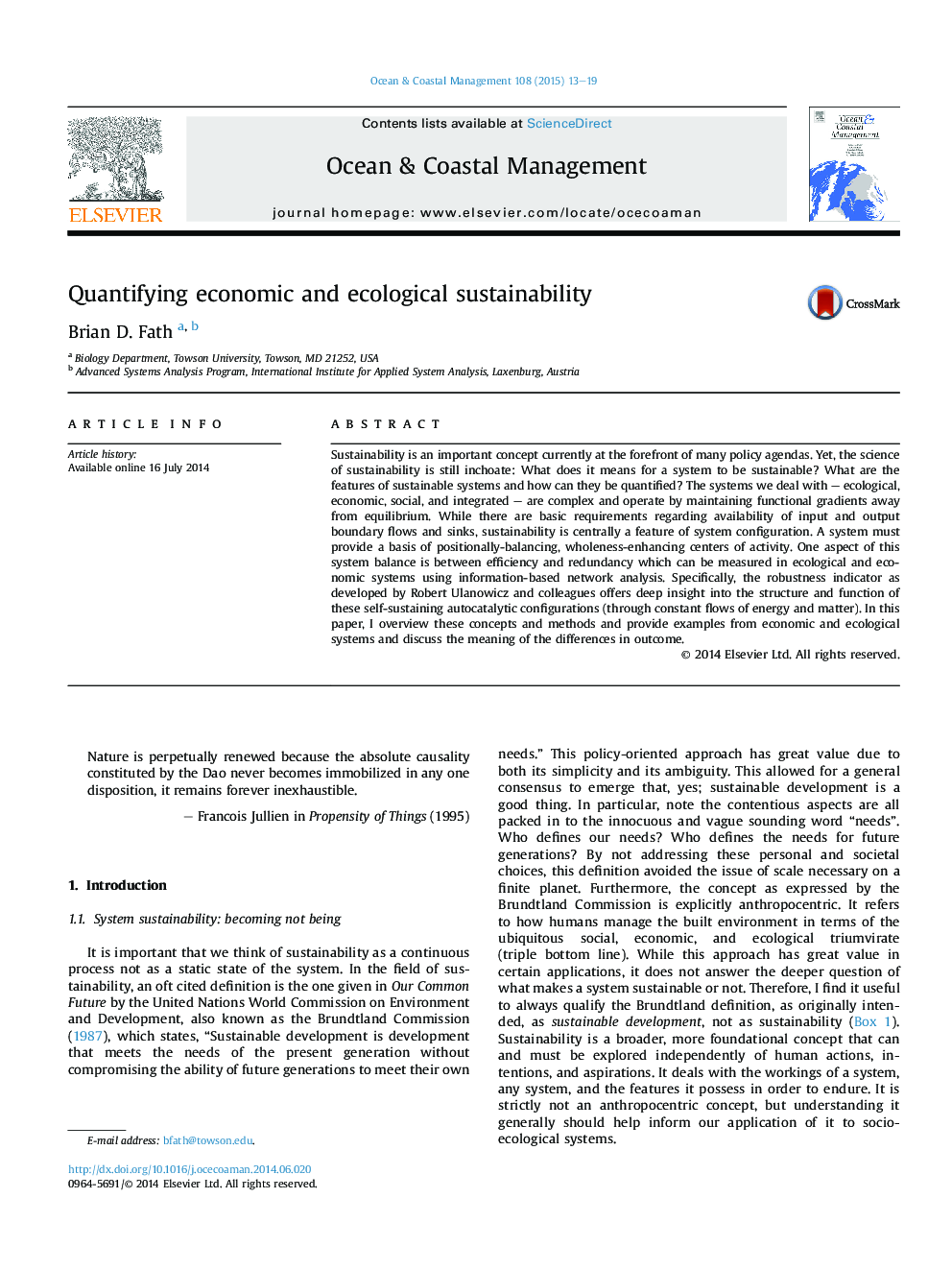| Article ID | Journal | Published Year | Pages | File Type |
|---|---|---|---|---|
| 1723504 | Ocean & Coastal Management | 2015 | 7 Pages |
•Sustainable Development and Sustainability are exposed as differing but related concepts.•A necessary condition for sustainable systems is continuation of input and output flows.•Sustainable systems possess gradient enhancing configurations through self-organization and autocatalysis.•The tradeoff between system efficiency and redundancy is possible to quantify using information theory.
Sustainability is an important concept currently at the forefront of many policy agendas. Yet, the science of sustainability is still inchoate: What does it means for a system to be sustainable? What are the features of sustainable systems and how can they be quantified? The systems we deal with – ecological, economic, social, and integrated – are complex and operate by maintaining functional gradients away from equilibrium. While there are basic requirements regarding availability of input and output boundary flows and sinks, sustainability is centrally a feature of system configuration. A system must provide a basis of positionally-balancing, wholeness-enhancing centers of activity. One aspect of this system balance is between efficiency and redundancy which can be measured in ecological and economic systems using information-based network analysis. Specifically, the robustness indicator as developed by Robert Ulanowicz and colleagues offers deep insight into the structure and function of these self-sustaining autocatalytic configurations (through constant flows of energy and matter). In this paper, I overview these concepts and methods and provide examples from economic and ecological systems and discuss the meaning of the differences in outcome.
